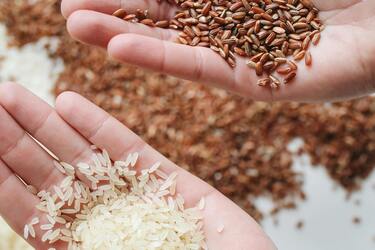Polished or unpolished rice: which type makes better pilaf

When choosing rice for pilaf, it is important to pay attention to its varieties. UAportal has prepared the main points to consider when choosing between polished and unpolished varieties.
Texture
The first parameter to pay attention to is the grain texture. Polished rice has a smoother surface, while unpolished rice is slightly harder.
Thus, if you want a softer texture, it is better to choose a polished variety. However, if you want the dish to be firmer, then unpolished is the ideal option.
Nutritional value
Polished rice has the outer layer of bran removed, which results in a reduction in nutrients such as fiber and vitamins. In contrast, unpolished grain retains its outer layer, making it healthier and higher in nutrients. For those who prefer the nutritional benefits of pilaf, unpolished rice is a better option.
Cooking time
Polished rice is usually cooked faster than unpolished rice due to its smoother texture. When you need a quick result, the polished variety is a more convenient choice.
However, for people who have more free time and who prefer a more traditional cooking method accompanied by a richer flavor, unpolished rice may be a better option in this case.
Shelf life
One of the key factors to consider is storage. The unpolished variety has a longer shelf life due to the presence of an outer layer of bran that helps protect the cereal from spoilage. If you plan to stock up on rice for a long period of time, unpolished rice is the best option.
If you want to get the latest news about the war and events in Ukraine, subscribe to our Telegram channel!
